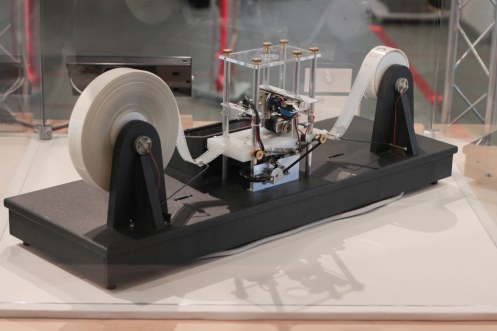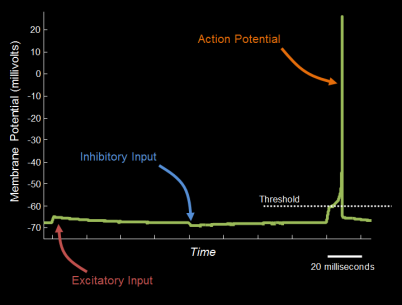
Oliver North (Wikicommons)
It’s never wise to click through to the crap that people link to on FB, but it a weak moment, I succumbed to curiosity for a headline that said something about getting rid of your microwave oven. I guess I assumed it would be something more about artisanal slow food techniques or something, but instead I was treated to a ridiculous diatribe about how microwave ovens have been killing us by destroying nutrients and GIVING US ALL CANCER. I should have looked away. Should have let it go. But that looming “Someone is wrong on the Internet” rabbit hole was too strong a pull for this Alice. Instead of just getting a drink and tweeting about the decline of critical thinking skills in America, I thought I would explain a little about why we scientists are such wet-blankets all the time.
In fact, these kinds of posts continue to surprise me. They require such foreign view of how science actually works and what the incentives are in society. Let’s think this through: First these are truly extraordinary claims, so they reasonably require extraordinary evidence.
Yet, there is no extraordinary evidence presented on the linked page (and I won’t give them the clicks by posting it here). There is fear-mongering, unreviewed studies, no actual primary sources and vague claims about a Russian ban on microwave ovens (that apparently never happened http://skeptoid.com/episodes/4080).
All that aside, believing these claims requires views of scientists and scientific institutions that are complete fantasy. Yes, large corporations can and do fund research in some areas (drug discovery for example), but for most fields there is no monolithic scientific industrial complex. Imagine you are a public health researcher or epidemiologist and you discover that a common household appliance can be linked to poor health outcomes (especially the dreaded cancer). It’s not like it’s a hard study to do, requiring millions funding from GE, so you are not likely to be corrupted by some oh-too-cozy consulting relationship with a funder. Instead, you have every incentive to make sure you do your science right and publish in the highest profile journal you can. Now, unless you discover some hitherto unknown biochemical mechanism underlying the effect, you might not get a Nobel, but if your findings are real, and expanded and reproduced, you will be a science superstar. You get tenure, grants, adulation, you will be the Jonas Salk of the age. And that is in addition to the pure humanitarian joy of saving millions of people from cancer (or other diseases).
So imagine these health dangers are real, and there are thousands of scientists, mostly independent of corporate funding, coming from diverse backgrounds (even liberal hippy treehugger schools like I did), all with huge incentives to find evidence of a massive public health threat. Where’s the evidence? Where are replications (even in marginal journals wanting to make a name for themselves)? Why can’t the website cite any peer-reviewed studies in real journals? I can think of two possibilities:
Mass cognitive bias. Presumably there could some sort of fundamental social bias against seeing these effects, like persisting to believe the earth is flat or the sun revolves around our planet. Having lived through the introduction of microwave ovens into home kitchens in the 70s, I can attest that if there was any cultural bias, it was toward fear (not safety). Deep in the cold war, there was a conflation of microwaves with nuclear radiation in the public mind, and I remember the admonitions to always stand more than 6 feet away from the devices. There were exposés on ovens with leaky seals and on how the safety locks might fail. Not exactly the environment for ignoring the possibility of health harms from these devices.
Massive conspiracy: Again, assuming that the effect exists and that most scientists are highly motivated to find it, the other common scenario in these sorts of alternative health claims in some kind of mass conspiracy of misinformation or soft co-opting corruption. The main trouble with these mass conspiracy theories is that they are so contrary to what we know about how individuals behave in large complex institutions. Some younger readers will remember the Iran/Contra Affair, in which Oliver North and John Poindexter (as part of one of the most secretive agencies in government, the NSA) tried to broker a rapprochement with the Iranians while funneling money a counter-insurgency group that the US supported in Nicaragua. The details of the plan are interesting for many historical reasons in how they reflect US foreign policy, but the most telling part of the whole incident is the congressional hearings that followed, where super spies North and Poindexter recounted a series of bumbling mistakes that eventually led to them being discovered. One precious example was that the committee was able to retrieve email that North thought he had deleted, because it was being dutifully backed up by the IT department. This is simply to say that large organizations have a hard time keeping secrets; they are much more likely screw things up (what I call “incompetence theory”). And this was an organization presumably a highly controlled, homogeneous workforce with largely convergent values. Does that describe the thousands of public health researchers in American or around the world?
Logistically, how would this suppression of findings even work? Would agents from GE’s microwave division, maybe Jack Donaghy, run around with bags of cash for scientists to keep them quiet? Maybe they get a cameo on 30 Rock. I digress. How much money would it take to convince someone to keep quiet about the biggest public health breakthrough of the last fifty years? How many scientists would say “No, keep your money, I’d rather cure cancer. Oh yes, and I’ll tell the New York Times what you are trying to do.”
The other logical flaw in these corporate conspiracy theories is that they assume corporate interests are themselves monolithic. Even assuming a vast network of microwave industrial complex agents spanning the globe, wouldn’t there be other corporate interests that would motivated to expose the truth? Remember those giant insurance and health care companies that are supposedly controlling the world and pulling the strings of their own conspiratorial puppet empires? They could expose the truth about microwave ovens and save millions of dollars. Natural gas companies would benefit from a return to gas ranges. Competitors could design safer versions that would highlight the negative effects of the previous generation.
In other words, though it is certainly possible that microwave ovens may cause adverse health effects, the hucksters, quacks and naturopathic scam artists have not made even the most basic case. The fact that people continue to fall for their sales ploys suggests nearly delusional misunderstandings of not only basic science, but sociology and psychology as well.



















